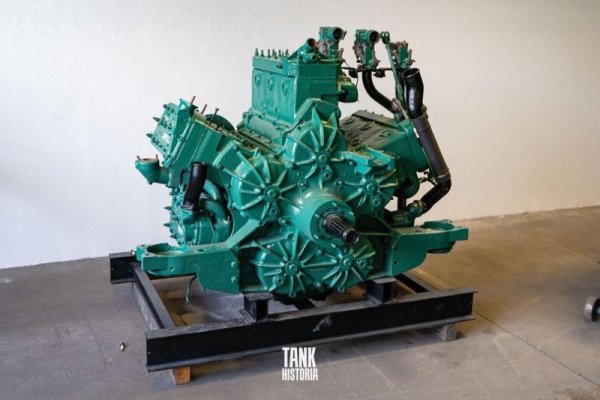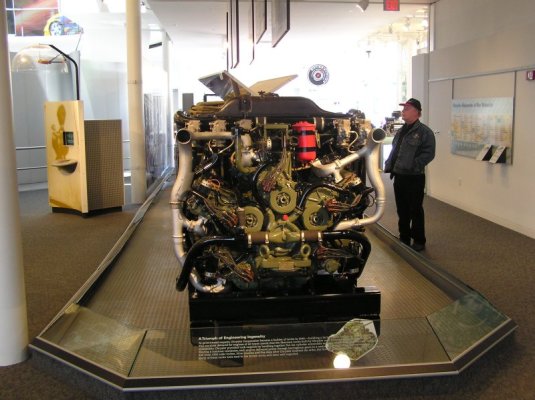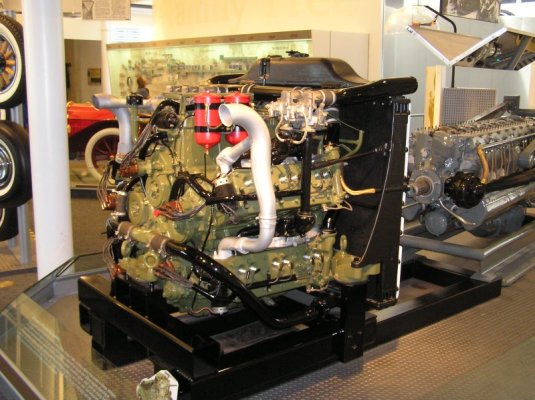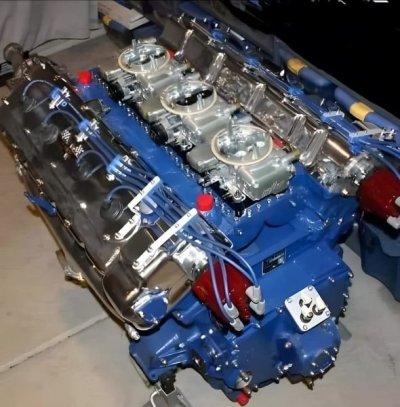You are using an out of date browser. It may not display this or other websites correctly.
You should upgrade or use an alternative browser.
You should upgrade or use an alternative browser.
Chrysler tank engine multi-bank
- Thread starter Auggie56
- Start date
Splangj
Well-Known Member
Pretty Cool! Well engineered to be able to pull out the entire engine assembly with the cooling system intact. Chrysler really had some good engineering back in the day.
I worked with a WW2 GI mechanic in the seventies and he didn't have anything good to say about it. But I agree with you about the engineering.Pretty Cool! Well engineered to be able to pull out the entire engine assembly with the cooling system intact. Chrysler really had some good engineering back in the day.
j-c-c-62
Well-Known Member
As true as that maybe, time in design and Developmemt is everything in open war, and it appears the multibank, even with it's shortcomings, got the job done.
Perfection is the enemy of progress, I believe applies here.
Not sure how many still exist, but I would love to see one on Engine Masters hopped up with modern technology and fuel to fantasize what could have been.
Perfection is the enemy of progress, I believe applies here.
Not sure how many still exist, but I would love to see one on Engine Masters hopped up with modern technology and fuel to fantasize what could have been.
Last edited:
- Local time
- 6:06 PM
- Joined
- Oct 25, 2010
- Messages
- 36,291
- Reaction score
- 138,018
- Location
- Monroe, New York
Auggie , Oh No, A ford Tank engine....
j-c-c-62
Well-Known Member
That was fun, thanks.
- Local time
- 6:06 PM
- Joined
- Oct 25, 2010
- Messages
- 36,291
- Reaction score
- 138,018
- Location
- Monroe, New York
j-c-c-62
Well-Known Member
A 12 pack you say?
Here we have a unique view of an A57 Multibank engine without most of its ancillary components attached.
The A57 is a monster of an engine, and famously complex. It was created in quickly in the early years of the Second World War to alleviate some of the engine supply issues for Shermans and M3s.
This haste was possible because it used common parts already in production.
It comprised of five (yes, five) Chrysler straight six engines, each displacing 4.1 litres (250 cu in). A gear was fitted to the end of each straight sixes' crankshaft, all of which meshed with a central output shaft to the transmission.
All in the A57 had 30 cylinders, displaced 20.5 litres (1,250 cu in) and produced around 400 hp and 1,350 Nm (1,000 ft lb) of torque.
Its five-engine nature meant it needed five distributors, five sets of inlet and exhaust manifolds, 30 spark plugs and five carburettors. Despite the complexity, it did give its host tank added redundancy, as it could still run even with two of the five engines down.
It was fitted in the Sherman M4A4. M4A4s are easy to spot as their hulls had to be lengthened to fit the engine - simply look for larger gaps between the bogie roadwheels. These vehicles were mostly supplied by the British, and were actually very reliable and well-liked in service.

The A57 is a monster of an engine, and famously complex. It was created in quickly in the early years of the Second World War to alleviate some of the engine supply issues for Shermans and M3s.
This haste was possible because it used common parts already in production.
It comprised of five (yes, five) Chrysler straight six engines, each displacing 4.1 litres (250 cu in). A gear was fitted to the end of each straight sixes' crankshaft, all of which meshed with a central output shaft to the transmission.
All in the A57 had 30 cylinders, displaced 20.5 litres (1,250 cu in) and produced around 400 hp and 1,350 Nm (1,000 ft lb) of torque.
Its five-engine nature meant it needed five distributors, five sets of inlet and exhaust manifolds, 30 spark plugs and five carburettors. Despite the complexity, it did give its host tank added redundancy, as it could still run even with two of the five engines down.
It was fitted in the Sherman M4A4. M4A4s are easy to spot as their hulls had to be lengthened to fit the engine - simply look for larger gaps between the bogie roadwheels. These vehicles were mostly supplied by the British, and were actually very reliable and well-liked in service.

j-c-c-62
Well-Known Member
OK, a V-8 bank military vehicle with a Mopar 361 @10:45
www.msn.com/en-us/news/opinion/the-multi-gun-beast-that-saved-marines-from-total-annihilation/vi-AA1B4GiY?ocid=msedgntp&pc=ACTS&cvid=5084b59c0ba6459d9720eefeeb523375&ei=47
www.msn.com/en-us/news/opinion/the-multi-gun-beast-that-saved-marines-from-total-annihilation/vi-AA1B4GiY?ocid=msedgntp&pc=ACTS&cvid=5084b59c0ba6459d9720eefeeb523375&ei=47
oldbee
Well-Known Member
Manual reloading was a b**** though.OK, a V-8 bank military vehicle with a Mopar 361 @10:45
www.msn.com/en-us/news/opinion/the-multi-gun-beast-that-saved-marines-from-total-annihilation/vi-AA1B4GiY?ocid=msedgntp&pc=ACTS&cvid=5084b59c0ba6459d9720eefeeb523375&ei=47
j-c-c-62
Well-Known Member
No doubt, but because of exposure to enemy fire, simply the effort it took to reload?
If enemy fire was the case, would the unit withdraw to a safer location to reload, or was it usually done in place?
If enemy fire was the case, would the unit withdraw to a safer location to reload, or was it usually done in place?
Similar threads
- Replies
- 0
- Views
- 1K
- Replies
- 22
- Views
- 1K



















